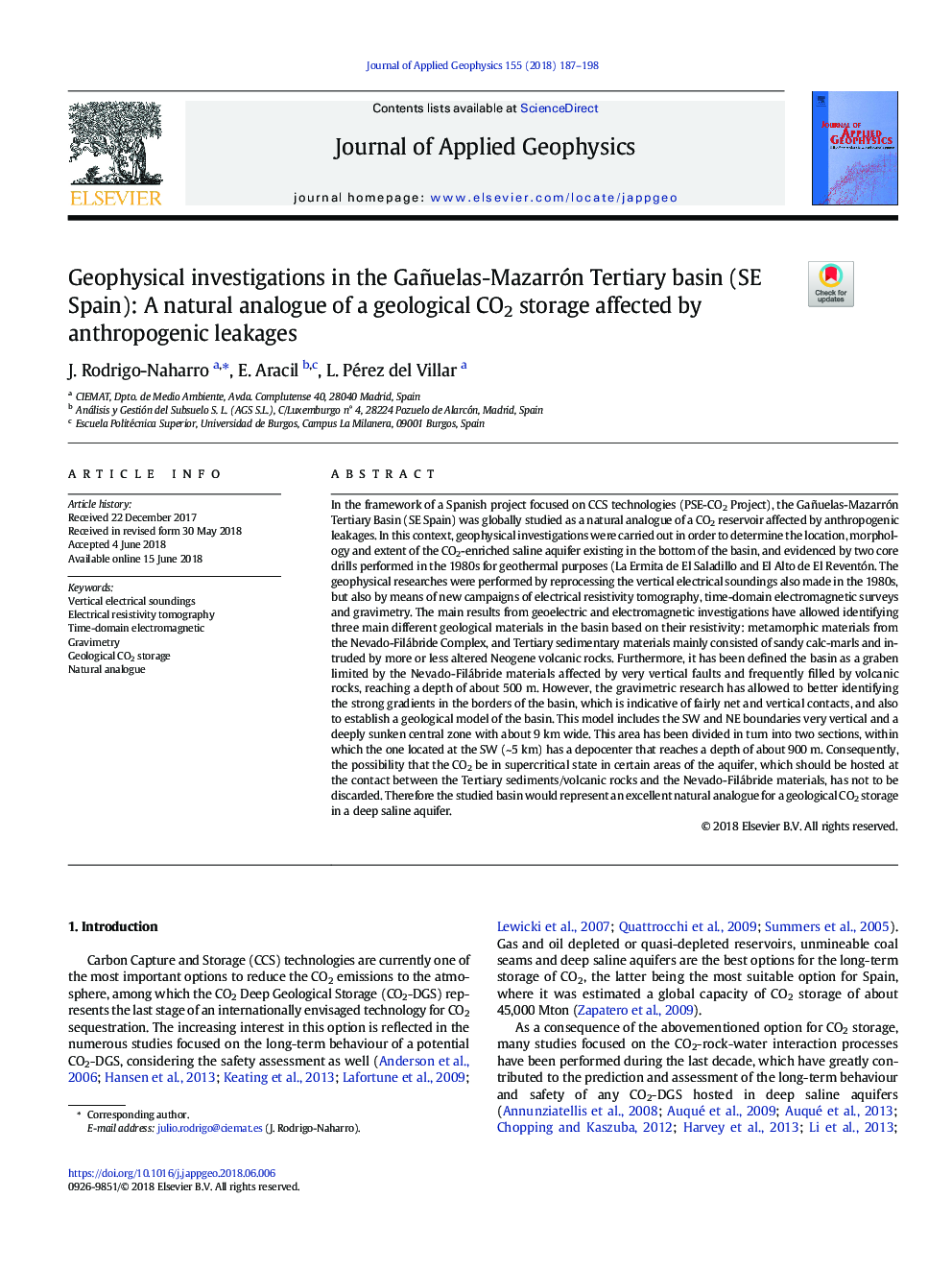| کد مقاله | کد نشریه | سال انتشار | مقاله انگلیسی | نسخه تمام متن |
|---|---|---|---|---|
| 8915338 | 1641096 | 2018 | 12 صفحه PDF | دانلود رایگان |
عنوان انگلیسی مقاله ISI
Geophysical investigations in the Gañuelas-Mazarrón Tertiary basin (SE Spain): A natural analogue of a geological CO2 storage affected by anthropogenic leakages
دانلود مقاله + سفارش ترجمه
دانلود مقاله ISI انگلیسی
رایگان برای ایرانیان
کلمات کلیدی
موضوعات مرتبط
مهندسی و علوم پایه
علوم زمین و سیارات
فیزیک زمین (ژئو فیزیک)
پیش نمایش صفحه اول مقاله

چکیده انگلیسی
In the framework of a Spanish project focused on CCS technologies (PSE-CO2 Project), the Gañuelas-Mazarrón Tertiary Basin (SE Spain) was globally studied as a natural analogue of a CO2 reservoir affected by anthropogenic leakages. In this context, geophysical investigations were carried out in order to determine the location, morphology and extent of the CO2-enriched saline aquifer existing in the bottom of the basin, and evidenced by two core drills performed in the 1980s for geothermal purposes (La Ermita de El Saladillo and El Alto de El Reventón. The geophysical researches were performed by reprocessing the vertical electrical soundings also made in the 1980s, but also by means of new campaigns of electrical resistivity tomography, time-domain electromagnetic surveys and gravimetry. The main results from geoelectric and electromagnetic investigations have allowed identifying three main different geological materials in the basin based on their resistivity: metamorphic materials from the Nevado-Filábride Complex, and Tertiary sedimentary materials mainly consisted of sandy calc-marls and intruded by more or less altered Neogene volcanic rocks. Furthermore, it has been defined the basin as a graben limited by the Nevado-Filábride materials affected by very vertical faults and frequently filled by volcanic rocks, reaching a depth of about 500â¯m. However, the gravimetric research has allowed to better identifying the strong gradients in the borders of the basin, which is indicative of fairly net and vertical contacts, and also to establish a geological model of the basin. This model includes the SW and NE boundaries very vertical and a deeply sunken central zone with about 9â¯km wide. This area has been divided in turn into two sections, within which the one located at the SW (~5â¯km) has a depocenter that reaches a depth of about 900â¯m. Consequently, the possibility that the CO2 be in supercritical state in certain areas of the aquifer, which should be hosted at the contact between the Tertiary sediments/volcanic rocks and the Nevado-Filábride materials, has not to be discarded. Therefore the studied basin would represent an excellent natural analogue for a geological CO2 storage in a deep saline aquifer.
ناشر
Database: Elsevier - ScienceDirect (ساینس دایرکت)
Journal: Journal of Applied Geophysics - Volume 155, August 2018, Pages 187-198
Journal: Journal of Applied Geophysics - Volume 155, August 2018, Pages 187-198
نویسندگان
J. Rodrigo-Naharro, E. Aracil, L. Pérez del Villar,